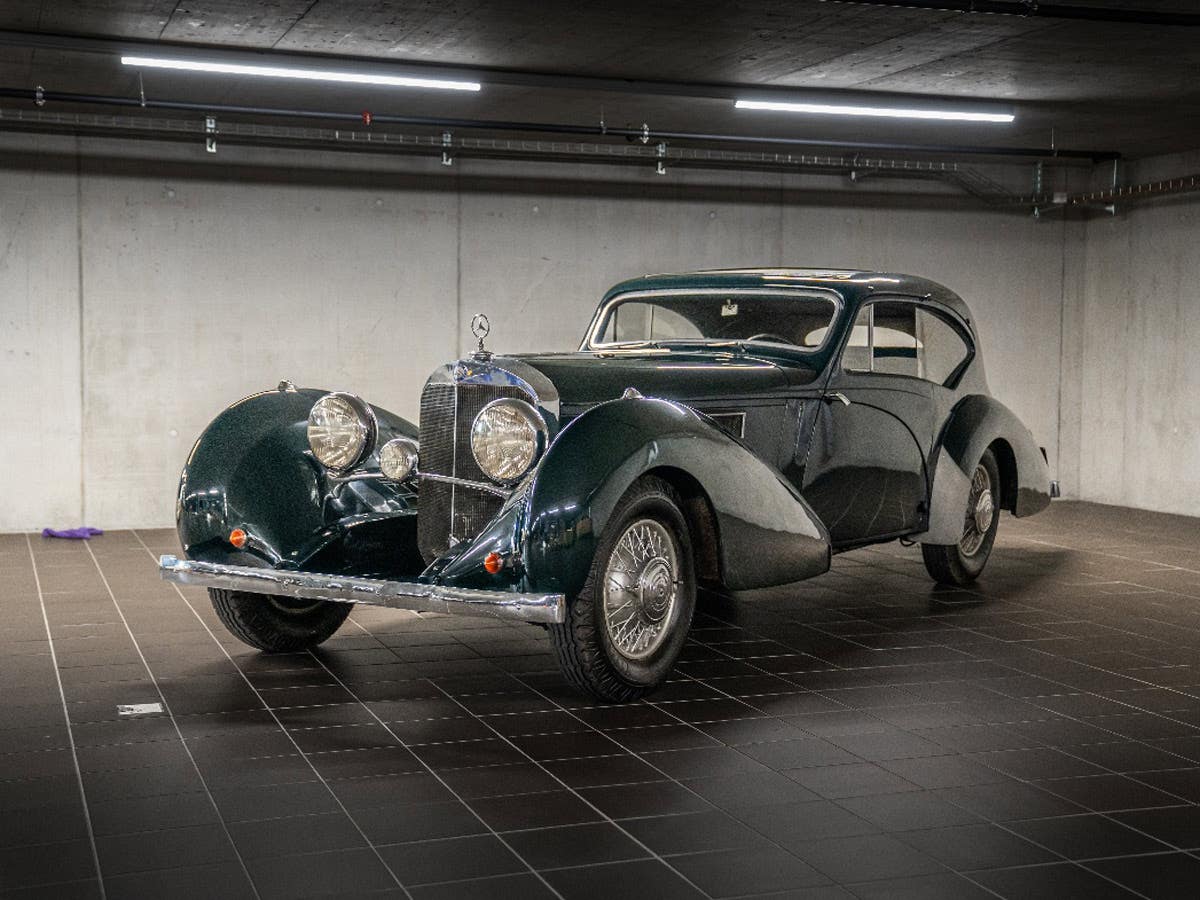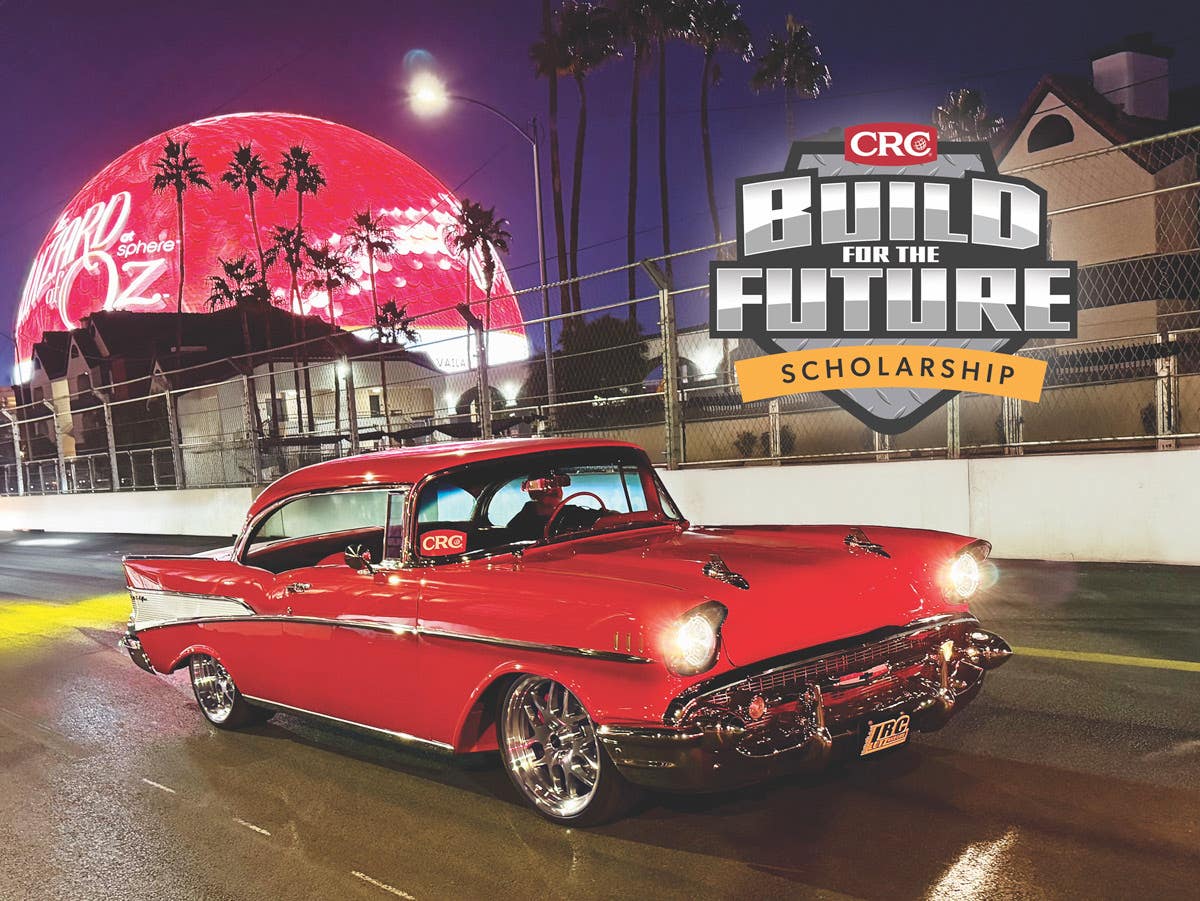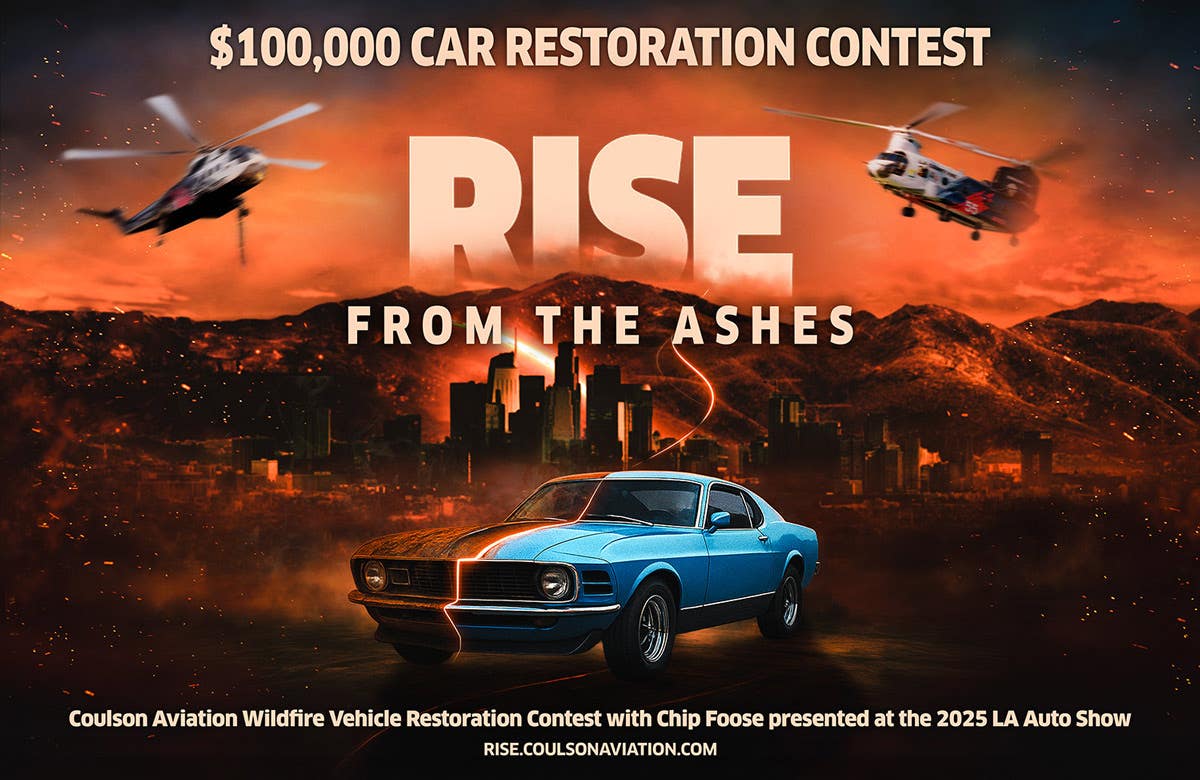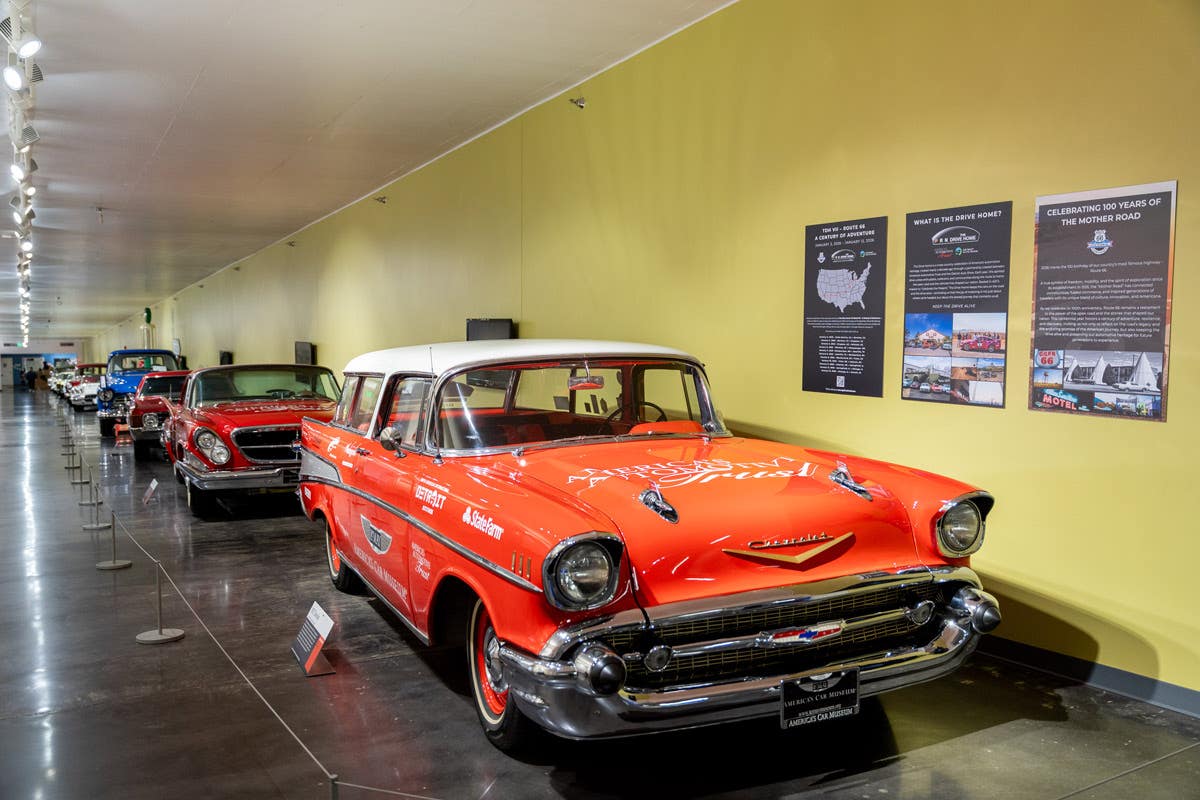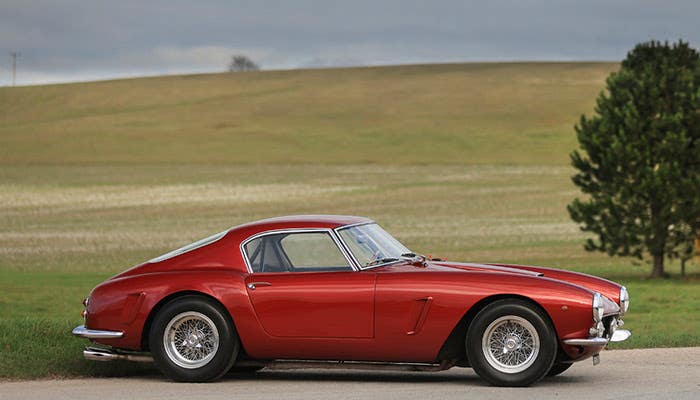Skyscrapers, low beauties mark inaugural NYC concours
Editor Input Needed
There was not a cloud in the sky — only skyscrapers — as the Wollman Rink in Central Park hosted the inaugural New York City Concours d’Elegance from September 30 to October 2, 2005. The event was conceived by Thomas Hamann, a Greenwich, Connecticut, vintage car dealer and native of Wiesbaden, Germany, as his own way of restoring a shattered city’s spirits after the 2001 World Trade Center attacks.
“At the time,” he recalled, “I lived in the San Diego area and had an apartment at the Sherry-Netherland, which overlooks Central Park. After the events of 9/11, every trip back to New York City was very sad. People wouldn’t invest here or even visit, and many businesses and individuals were considering leaving. So I asked myself, ‘What can I do to revive the city,’ and my first thought, as a car guy, was to put on a car show.”
Though the facility’s size limited the field to about 50 cars, Sunday’s displays were dedicated to Italian makes like Lamborghini, Maserati, and Ferrari, with the Best of Show presented to a 1955 Ferrari 375 America owned by Jack Thomas of St Louis, Missouri. The resulting intimacy proved a resounding hit with car owners and spectators alike, especially those that headed to the observation deck and took in the southward panorama of cars, trees, and skyscrapers.
“You ought to see it at night when the city is lit up,” said Walter Eisenstark of Yorktown Heights, New York, who showed a bright red, Balbo-bodied 1954 Siata 200 CS coupe with Fiat 8-V power that his father purchased off a Queens used car lot in 1959.
Judging team member John Paterek, who restores Porsches in Chatham, New Jersey, compared the event to the similarly sized and flavored Louis Vuitton Classic held at Rockefeller Center from 1996-2000, asserting that, “With 50 cars, this site is manageable. With 75 cars and this amount of people, the place could be overrun, and this encourages you to be selective.” After his wife, Donna, observed there “are so many cars here you don’t see at every show,” John realized, “Come to think of it, there’s just one car here I’ve seen before, and that’s because we happened to do the interior on it.”
Excepting a roster of worthy beneficiaries that included the Central Park Conservancy, New Yorkers for Children, and the Hurricane Katrina Relief Fund, among others, nothing epitomized the event’s intrinsic merit more than the fact that entrants came from far beyond the New York metropolitan area. Two enthusiasts from Alfa Romeo’s home town of Milan, Italy, Ugo Isgro and Corrado Lopresto, respectively displayed a burgundy-colored 1935 6C 2300 Pescara roadster given Best Restored Car and a Farina-bodied 1947 6C 2500 cabriolet sporting an unusually long hood and a special, horizontal grille.
An all-original, open-cockpit 1960 Maserati Tipo 60 “birdcage” owned by Thierry Morin of London, England, earned Best Preserved Automobile and the top award in the Sports Racing Under 2 Liters category. Greenwich, Connecticut, resident Lawrence Auriana received equivalent honors in the Over 2-Liter class for a 1956 Maserati 300S once campaigned by Juan-Manuel Fangio, that idled like a sewing machine on steroids.
Having cleared U.S. Customs in the nick of time on Friday evening, the Best Grand Touring Car was judged to be the one-off, Bertone-bodied Aston-Martin DB4GT Jet designed by Giorgetto Giugiaro for the 1961 Geneva and Turin auto shows. Hans-Peter Weidmann of Basel, Switzerland, has driven more than 35,000 miles, including a 15-hour, 950-mile trip from San Francisco to Vancouver in a single night, since its restoration was completed at the Newport Pagnell factory in 1989. “After 15 years, it still looks good, which says much about the quality of the work,” he remarked, recalling also that Nuccio Bertone liked the car so much that “He used it for two years himself, then sold it to a businessman in Lebanon.”
A central steering wheel, skirted front and rear fenders, and a six-cylinder, sleeve-valve engine all but guaranteed the Most Advanced for its Time Award would go to a 1938 Panhard Dynamic sedan shown by fellow French expatriates Alain and Elisabeth Cerf of Tampa Bay, Florida. “In 1930s Europe,” Alain said, “most of the cars were right-hand drive, but some countries were changing over, and it was hoped that the [center steering] arrangement would have everyone happy. It didn’t work, unless you had a girl on each arm.” He also recalled that his Dynamic, almost certainly the only one in the U.S., came his way five years ago through a California broker who had it on offer for a decade with no takers.
“No one knew how to deal with it, but for a Frenchman, it is easier,” he surmised. Even though 2,581 were completed from 1936 to 1939, “It was almost a concept car at the time. Think of this in the same way as you would a Citroen DS from 20 years later, in that some people were for it, and some were against it, but it represented a big change and everything else. In a way, was old after it came along.”
The Dynamic also features a unitized body, dual-circuit braking with dual master cylinders, a three-piece windshield with curved corner panes, and small winged ornaments above the headlight cages that mimicked the hood ornament and doubled as release catches for changing the bulbs!
In the same spirit, it is also worth noting that the couple’s Tampa Bay Automobile Museum in Pinellas Park, Florida, also has a front-wheel-drive 1929 Ruxton and a rear-engined, single-cylinder Hanomag Kommissbrot (or “Army loaf”) that’s one of only 10 running out of 16,000 made in Hannover, Germany, in the 1920s.
Audi, the official car of the concours, arranged for its Heritage Department to display a massive 1929 Imperator that was thought to be the only survivor out of 145 built from 1927-’29. The low production figure is hardly surprising, given that the original price of this A8 ancestor was 16,000 Reichsmarks for the chassis alone.
Powered by a 5-liter, 100-hp straight-eight engine permitting a top speed of more than 70 mph, this 19,000-kilometer example had been found in the former East German state of Saxony in the late 1990s. The fact that it was discovered without a body suggests it might have been destined for fire brigade duty. Period photos in the company archives were used to reconstruct seven-passenger touring car coachwork from scratch, while the original olive green-and-brown exterior scheme was identified from paint fragments on the headlights.
As the old August Horch company represents one of the four rings in Audi’s “Auto Union” logo (meaning “to listen”), the name itself conveys the same ideal in German that Audi does in Latin. As such, it was most fitting that the Lalique-sponsored Best of Show Award on Saturday went to a 1938 Horch 853-A Special Roadster, bodied by Erdmann & Rossi of Berlin, which was marking its first time on display since winning Best of Show at Pebble Beach in 2004.
“How can you resist the venue if you’re from New Jersey?” said the Horch’s owner, Judge Joseph C. Cassini III, as spectators admired the alligator-and-Nigerian goat skin upholstery or counted the dozens of louvers covering the hood and fender skirts. “New York City, Central Park — it just can’t get better than this, and we’ve been treated extremely well. When you ask the staff for something, they get it done, and it’s a very user-friendly facility with good catering and security. I would definitely come back.”
Asked to relate the history of his Horch, Cassini recalled that the 853 was conceived as a competitor to the Mercedes 540K. Its 5-litre, straight-eight engine, already making about 140 hp, was originally designed with supercharging in mind, though no production cars were so equipped. The chassis touted four-wheel independent suspension and built-in hydraulic jacks.
“I was looking for a special car that was quite rare, and it had to be sexy-looking too,” he continued. “Only five Special Roadsters were made from 1938-’39. Hermann Göring got the first one, which was equipped with a bulletproof windshield. His car was destroyed, and car number five may be in Russia, but this is the only one in the U.S. of the three that exist for sure.” In common with a number of other 1930s German giants, this car was brought to the U.S. by a returning World War II serviceman, who kept it behind his Cleveland-area gas station until a Tampa, Florida, enthusiast named Herbert Von Fragstein purchased it in 1969.
“He started to dismantle the car with the intention of restoring it, and spent 30 years in an international search amassing parts, but decided a restoration would be more than he wanted to take on by the time he reached his 70s,” Cassini added. “I heard about the car from RM Restorations [whose Blenheim, Ontario, shops, would ultimately devote two years and 12,000 man-hours to the project], who had their ear to the ground. When I brought pictures of the car home to my wife, she said, ‘How much did they pay you to take it away?’ ”



